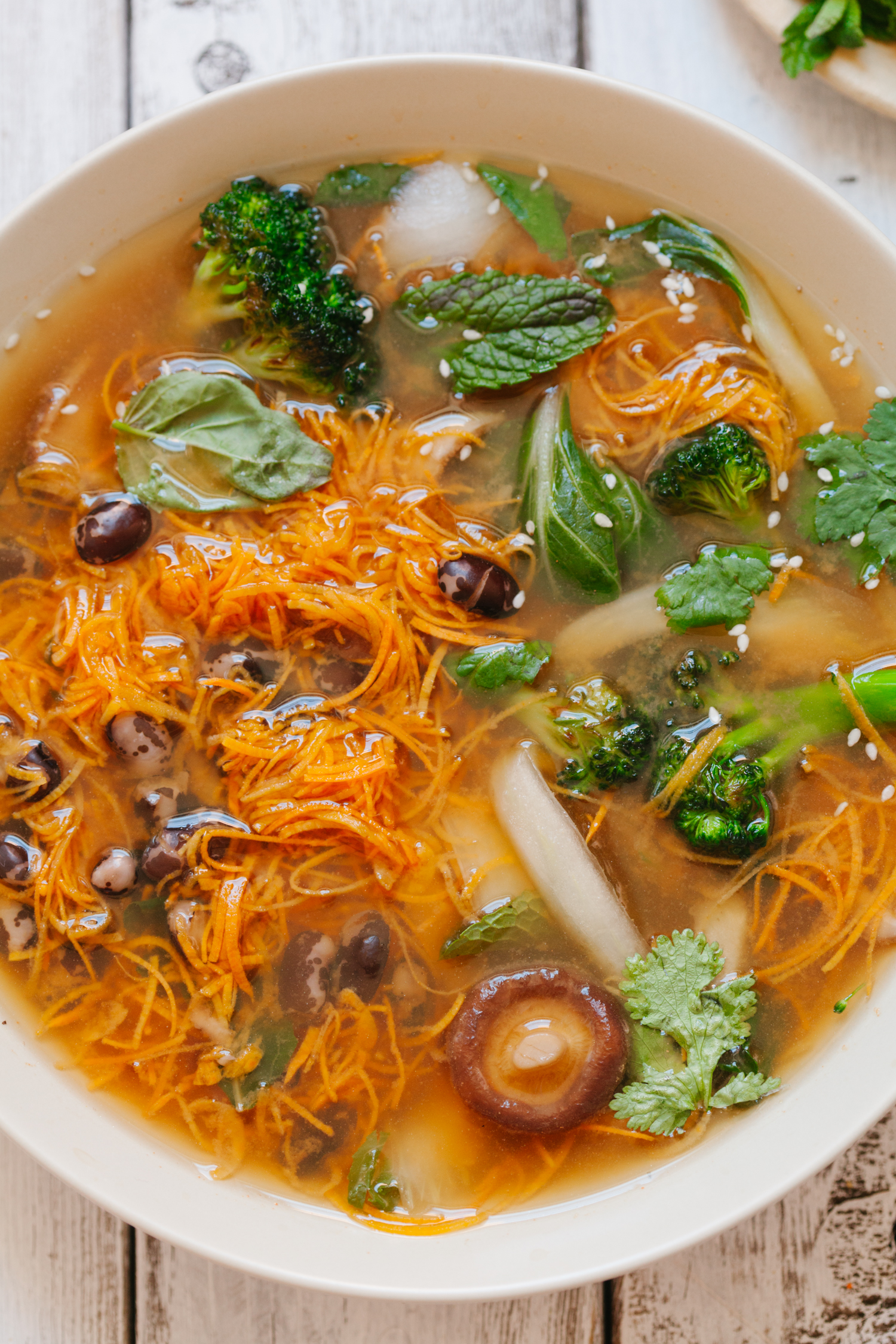
March 22nd, 2016

As though writing a cookbook and trying to stay on top of a second grader’s homework and extracurriculars is not enough, we’re planning a long overdue and major kitchen renovation this summer. When I say long overdue, I am not exaggerating one bit, as we haven’t put a hammer or paintbrush to the kitchen in the thirteen years of living in this house. Something has always topped it on the priority list, which, I know, sounds crazy considering what I do.

Our kitchen is nicely sized and sunny, but has many questionable and outdated details from the 90s along with badly aging countertops, the layout needs improvement, and there is a low hanging ceiling in an otherwise high ceilinged house. There’s lots of unearthed potential, and we are finally coming around to letting it free. To me, this is extremely exciting – the kitchen is my office, the place where the family eats, and also happens to be the central hangout spot in the house.

Somehow, we’ve managed to put ourselves onto a very tight schedule – the book manuscript is due June 30th, and the kitchen is being knocked down July 1st, the next day!
For now, I’m planning and gathering ideas, scouting Craigslist and Pinterest, and picking up old pieces of driftwood off the beach – who knows when I’ll need them.

Hot soup has always been my ultimate comfort food, and I know I will be needing lots of it in the months to come. Vietnamese pho is king when it comes to soups that warm you from the core, and I’ve been experimenting with vegetarian pho recipes during the past couple of weeks. The main component of any pho, but especially vegetarian pho, is the broth. This pho broth is first and foremost based on toasted spices – star anise, cinnamon, coriander, cardamom, peppercorn, and clove – each bringing its individual character to the flavor profile. I’m not normally the biggest fan of cinnamon in savory dishes, but in this broth it balances with tamari, brown rice vinegar and chili to create a fragrant and deeply nourishing broth.

I bought a few too many sweet potatoes from my favorite local farm and they made it into the pho in place of rice noodles, truly hitting the spot. This soup is all I want to eat right now. It’s warming, spicy and substantial, but also loaded with springy, crunchy vegetables and tons of herbs – the perfect balance, if you ask me.
Ciao Italian readers! Our book The Vibrant Table is now available in Italian, and you can order it here.

Vegetarian Spring Pho with Sweet Potato Noodles and Heirloom Beans
Note: I noticed that making the broth the night before lends the best flavor, so if you have time, let the aromatics sit in the broth for a night.
2 star anise
2 cinnamon sticks
1 teaspoon whole coriander seeds
1 1/2 teaspoon black peppercorn
5 whole cloves
3 cardamom pods – green shells removed
1 medium onion – sliced into 8 wedges
3 garlic cloves – crushed with a knife
1-inch piece ginger, sliced and crushed with a knife
1/2 lb shiitake – hard stems removed, caps sliced
6 cups purified water
3 1/2 tablespoons tamari
1 tablespoon brown rice vinegar
1/4 teaspoon sriracha
1 1/2 cup cooked beans (I used these beautiful ones)
2 medium sweet potatoes – spiralized (I use this spiralizer)
1 tablespoon coconut oil
1 small or 1/2 large broccoli head – cut into florets
2 baby bok choy or 1 regular bok choy – sliced
handful mung bean sprouts
juice of 1 lime, plus more for serving
handful each cilantro, basil and mint leaves
1 tablespoon sesame seeds
1. Warm dried spices in a medium soup pot over medium heat, stir around until toasted and fragrant, for about 2-3 minutes. Add onion, garlic and ginger and toast for another couple of minutes, until fragrant and onion begins to get some colour. Carefully add water (it may splatter) and shiitake stems, followed by tamari, brown rice vinegar and sriracha. Bring to a boil, lower the heat to simmer and cook, covered, for 30 minutes. Remove from heat and let infuse further for at least 30 minutes or as long as you have time (overnight is best). Strain, discard solids.
2. Warm the coconut oil in a medium saute pan over medium heat, add broccoli and bok choy and saute for about 3-4 minutes, until they turn bright green in color. Set aside. This step can be eliminated and you can add broccoli and bok choy directly to the broth, along with the sweet potato noodles or later, together with mung bean sprouts, if you want to keep the greens extra crunchy.
3. In the meantime, bring the broth back to a boil, add cooked beans, sweet potato noodles and sliced shiitake caps. Adjust the heat to a simmer and cook for 3 to 5 minutes, depending on the type of spiralizer used. Mine makes very thin threads, so 3 minutes is enough time, while other spiralizers produce much thicker noodles, which need longer cooking time. Add sauteed broccoli and bok choy to the broth, followed by mung bean sprouts.
4. Remove pho from heat, add lime juice, herbs and sesame seeds. Serve warm with more lime juice and/or fresh herbs.
Tags: beans, bok choy, broccoli, mushrooms, pho, shiitake, soup, sweet potato, vegan

April 1st, 2014

I’ll start off by saying how grateful and excited we are to be nominees in Saveur’s Best Food Blog Awards. The company we’re in is amazing, and it truly is an honor. If you enjoy our recipes and photos, please consider voting for Golubka Kitchen in the Special Diets category – it would mean the world!

Finding time to spend in the kitchen is never easy. Between work, school, children and taxes, cooking can quickly become the last thing you want to worry about as your tired self. I think one of the most challenging things to plan for is lunch to take to work or school. But bringing lunch instead of buying it is much more economical, will most likely be healthier and, dare I say, even tastier.

What I like to do is prepare a few separate components over the weekend, which can quickly be assembled into a big, tasty salad on the weekdays. Beans, legumes or grains are an important base – they will keep you nourished and full. A variety of roasted or steamed vegetables will add flavour and juice. Olives and maybe even a nice, soft cheese like Bulgarian feta will contribute a bit of depth and salt. Sliced avocado is always great for its natural fats. Garnish with herbs, seeds or nuts, lay it all on a bed of greens, and after a squeeze of lemon and maybe a drizzle of olive oil, you will have yourself a lunch. No dressing necessary. The valuable thing about this kind of recipe is that all the components can be prepared ahead of time, and you can always keep switching them up when you assemble, so as not to get tired of eating the same thing. I find that having your own home cooking for lunch at work is quite comforting, and it always tastes extra delicious.

Weekday Salad Components
1. Eggplant
Preheat oven to 400F (200C). Cut eggplant in half lengthwise and score diagonally. Sprinkle with salt, optionally brush with olive oil. Bake for 20-30 minutes or until soft, depending on the size. Keep refrigerated in an air tight container. If you’re not into eggplants, grilled zucchini will work great too.
2. Roasted Bell Peppers
Cut peppers in quarters, remove seeds. Place on a large baking tray with minimal overlapping and bake for 20 minutes at 400F (200C). Alternatively, turn on the broiler and place whole peppers on a foil-covered tray under the broiler. Check and turn peppers frequently until all the skin is burnt. Remove and cover to let sweat, until cool. Peel the skin away. Slice and remove the stem and seeds, keep refrigerated.
3. Beans and Legumes
Pre-soak and cook any kind of beans and or lentils until soft, drain, and let cool. Or rinse canned beans. I like a variety of beans such as chickpeas, kidney, black, white, puy or black lentils, etc. – any will do. To keep things even lighter and healthier, you can sprout your beans/lentils instead of cooking them. Add sea salt and freshly ground black pepper to taste to your cooked or sprouted beans, add a small amount of minced garlic and plenty of fresh herbs, such as dil, parsley, cilantro, mint, basil – whatever you prefer. I’m partial to dill and parsley here. Squeeze a generous amount of lemon juice over and lightly drizzle with olive oil. Mix to combine thoroughly. The salad will become more flavorful after marinating in the refrigerator for some time. Alternatively, make your favourite grains.
4. Good Olives
I love Cerignola and Castelvetrano, which can usually be found at the salad bars of health food stores and Italian markets.
5. Other add-ons:
Sliced cucumbers
Cherry tomatoes
Sliced avocado
This Shredded Beet Salad
Sauerkraut
Fresh salad greens
Goat’s and/or sheep’s milk feta cheese
Lemons
Nuts/seeds
Assembly
Assemble any way you like! I like to arrange salad greens on a plate or in salad bowl. Top with a small amount of chopped grilled eggplant and sliced roasted peppers. Add a tablespoon or two of beans, olives, avocado and cheese and squeeze more lemon juice over, together with olive oil (even though it’s optional here). Grind more of black pepper on top, if desired.
Optionally, add a scoop of beet salad, if using. Add sauerkraut, cucumbers and tomatoes instead of or together with other ingredients. Enjoy!





